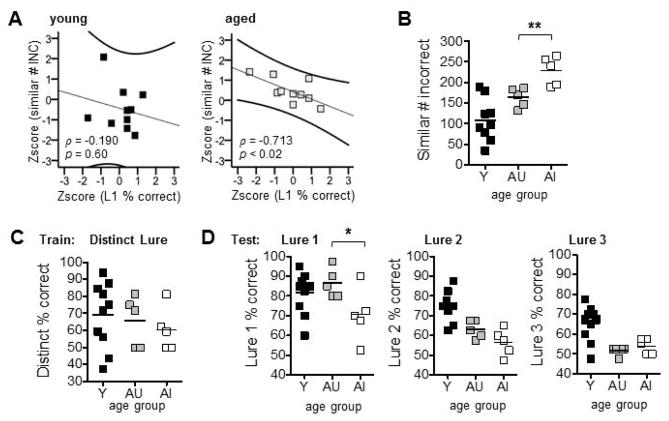Figure 5.
Analyses of relationships between individual rats’ abilities on object discrimination training in Experiment 1 and mnemonic discrimination tests in Experiment 2. (A) Scatter plots and results of correlation between number of incorrect (INC) responses made in reaching criterion on the similar LEGO® object pair in Experiment 1 and normalized % correct discrimination responses on Lure 1 trials (L1) in Experiment 2 for young (left panel) and aged (right panel) rats, considered separately. A significant inverse relationship was detected between the two variables for aged rats only (p < 0.02). (B) Mean (±SEM) number of incorrect responses made during similar object discrimination training in Experiment 1. Values are plotted for individual young (Y) rats, and individual aged rats segregated into unimpaired (AU) and impaired (AI) groups based on training required for similar object discriminations. Relative to AU, AI required a significantly greater number of incorrect trials to reach criterion on the similar pair (p < 0.008). (C,D) Mean (±SEM) percent correct discrimination responses on Experiment 2, for individual Y, AU, and AI rats. Separate plots are shown for the Distinct Lure object used in pre-training (C) and for each lure object used in tests (D). Relative to AU, AI showed impairments on Lure 1 trials (p < 0.05). * p < 0.05, ** p < 0.01.

